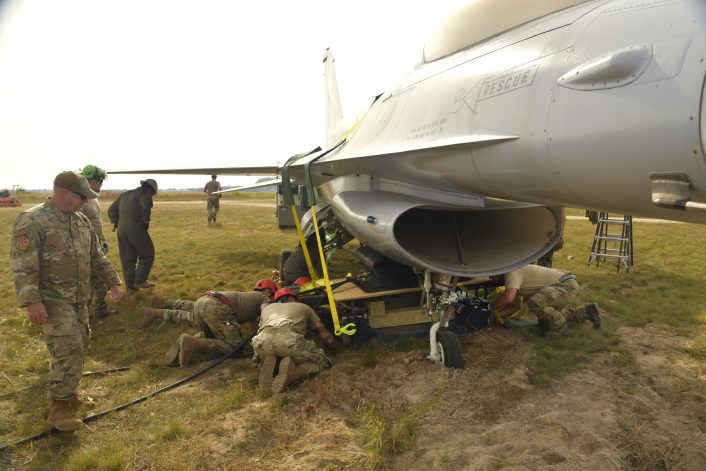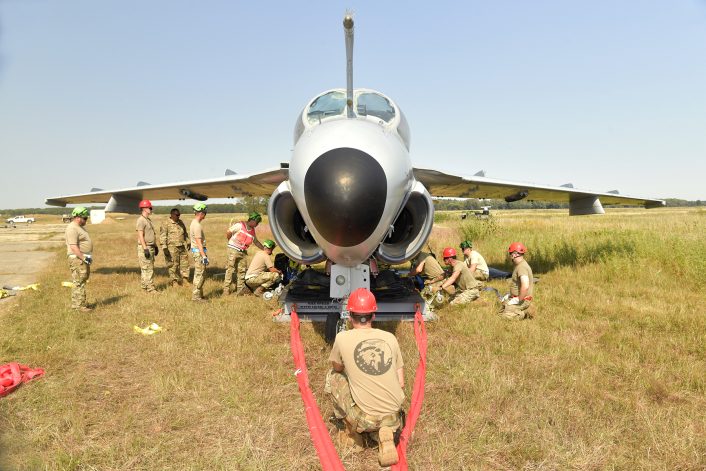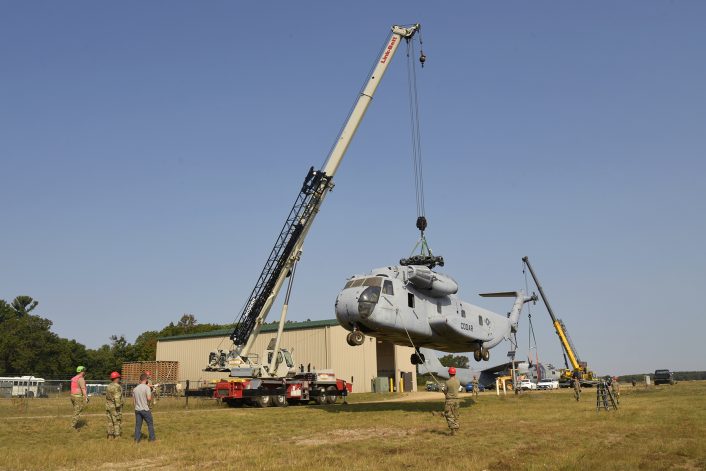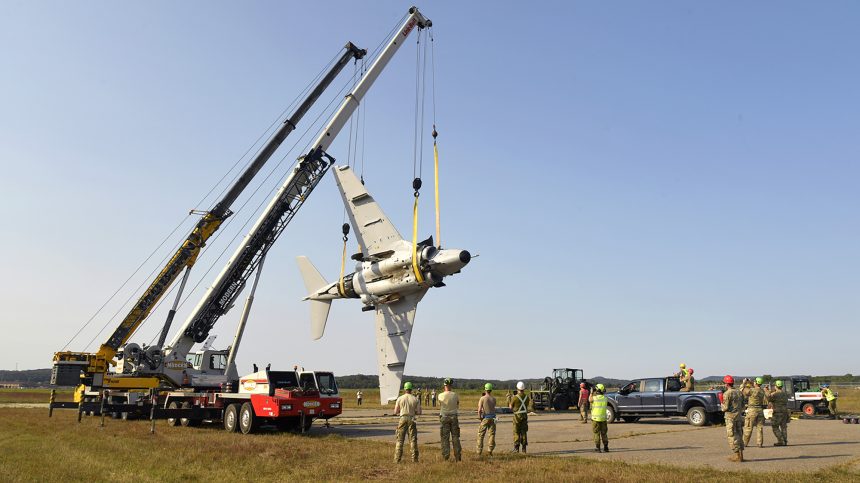The U.S. Air Force’s F-35 Joint Program Office recently hosted the first-ever global Crash Damaged or Disabled Aircraft Recovery (CDDAR) Team Chief Course at Volk Field.
From Sept. 8-14, 2024, over 100 seasoned recovery personnel from across the world, including representatives from the U.S. Air Force, Navy, Marine Corps, and Lockheed Martin, alongside personnel from five international partner nations in the F-35 program took part in the first Crash Damaged or Disabled Aircraft Recovery (CDDAR) Team Chief Course at Volk Field, Wisconsin.
According to Dan Santos, depot and heavy maintenance manager at the F-35 JPO, this course is critical for building strong partnerships within the F-35 enterprise, given the demands for joint cooperation that have emerged during recent aircraft recovery efforts. In past incidents, differing recovery procedures between international and inter-service teams highlighted the need for a more unified training approach across the global F-35 community in a public statement.
Safety is paramount in CDDAR operations. Our primary focus is ensuring safety, followed by minimizing damage to the aircraft. Swift and efficient recovery efforts are essential to uphold the readiness and capabilities of the F-35 fleet.
Volk Field, renowned for its CDDAR training program, was the ideal host for this event. The Wisconsin-based site has maintained a rigorous, volunteer-driven CDDAR training program for over a decade, providing realistic, hands-on training with various aircraft for military and civilian personnel alike. The expertise of the Air National Guard instructors, who conduct CDDAR courses twice annually, offers participants an immersive experience in aircraft recovery techniques, including situations involving complex and challenging crash scenarios.
Advanced Training Techniques and Real-World Applications
The recent CDDAR training utilized a diverse fleet of salvage aircraft, including C-130s, an F-16A, an A-6, and a CH-53 helicopter, which allowed teams to practice established recovery techniques as well as new, F-35-specific procedures. This unique setup provided the training course with a well-rounded curriculum, combining conventional recovery exercises with adaptations required by the advanced features of the F-35.

Senior Master Sgt. Jordan Jensen, Transit Alert Supervisor and CDDAR site manager at Volk Field, emphasized the flexibility and adaptability central to the “Advanced Team Chief Course.”
We’ve structured the course to reflect the real-world unpredictability of aircraft recovery scenarios. Rather than following a rigid, step-by-step protocol, we coach students to think critically, adapt to unexpected challenges, and come up with creative solutions.
This departure from conventional training methods encourages participants to rely on their experience and teamwork, rather than a set script, which closely mirrors the conditions they would face in an actual aircraft recovery situation.
Jensen added that while foundational training from institutions like the Air Education and Training Command offers essential baseline skills, the realities of crash recovery require personnel to exercise their specialized skills with greater flexibility.
Real-life recovery operations rarely go exactly as planned. Our goal here is to provide advanced training that allows recovery experts to operate effectively even when resources are limited. Senior Master Sgt. Jordan Jensen, Transit Alert Supervisor and CDDAR site manager.
Global Coordination
While similar F-35 CDDAR courses are available, such as the program recently launched at Hill Air Force Base in Utah, the Volk Field course stands out for its emphasis on multi-national collaboration and real-world recovery scenarios. Dan Santos explained that Hill AFB’s course primarily prepares personnel for F-35 incidents on established airfields and adheres strictly to technical recovery orders. In contrast, Volk Field’s program tackles off-airfield accident recovery scenarios, challenging participants to assess complex situations and apply their expertise and available resources to resolve them.
A standout training scenario involved recovering an A-6 aircraft partially submerged in mud. This exercise demonstrated the value of varied approaches, as each team used a different recovery strategy to achieve success. Santos highlighted the importance of these diverse approaches, noting that they add valuable perspectives and techniques to the global F-35 recovery effort.

The CDDAR training at Volk Field reflects a broader trend toward building a prepared and collaborative international recovery community. This initiative is becoming increasingly essential, as military forces worldwide face growing instability and the demand for rapid, coordinated responses to complex crises. Chief Master Sgt. Thorsten Michels of the German Air Force highlighted the significance of international coordination in F-35 recovery. Michels referenced his team’s recent work with the U.S. Air Force at the Emergency Responder Weapons Crew conference, where discussions centered on recovery, cooperation, and cross-training among F-35 partner nations.
Networking is critical in this field. We already collaborate on other military issues, so it’s crucial that we expand our cooperation in CDDAR operations as well.
Future Initiatives
Looking to the future, Santos revealed that efforts are underway to further enhance CDDAR capabilities with new technologies and international collaboration. The U.S. Air Force is testing prototype recovery equipment, including heavy-duty transporters and sleds, known as plane skates, designed for moving disabled aircraft. Additionally, discussions are ongoing about involving fire departments more extensively in crash recovery, with the aim of enhancing readiness and maximizing the use of on-hand resources and personnel.
This recent training event has also sparked initiatives to increase the participation of international partners in each other’s CDDAR programs. Such cross-training promises to deepen expertise across the global recovery network, fostering a unified response capability for F-35 mishaps.
As Santos observed, “The CDDAR event at Volk Field represents a major milestone in international cooperation and knowledge-sharing. By cultivating these collaborative efforts, we’re setting the stage for a stronger, more prepared response to F-35 mishaps on a global scale.”










